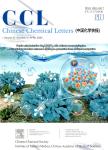A portable viable Salmonella detection device based on microfluidic chip and recombinase aided amplification
A portable viable Salmonella detection device based on microfluidic chip and recombinase aided amplification作者机构:Key Laboratory of Agricultural Information Acquisition TechnologyMinistry of Agriculture and Rural AffairsChina Agricultural UniversityBeijing 100083China Department of Biological and Agricultural EngineeringUniversity of ArkansasFayetteville 72701United States College of Veterinary medicineSouth China Agricultural UniversityGuangzhou 510642China
出 版 物:《Chinese Chemical Letters》 (中国化学快报(英文版))
年 卷 期:2023年第34卷第2期
页 面:268-273页
核心收录:
学科分类:080903[工学-微电子学与固体电子学] 1004[医学-公共卫生与预防医学(可授医学、理学学位)] 0809[工学-电子科学与技术(可授工学、理学学位)] 08[工学] 09[农学] 0903[农学-农业资源与环境] 0703[理学-化学] 100403[医学-营养与食品卫生学] 10[医学]
基 金:funded by National Natural Science Foundation of China (No. 32071899) Walmart Foundation (No. UA2020– 154)。
主 题:Finger-actuated microfluidic chip PMAxx Recombinase aid amplification Smartphone App Viable bacterial detection
摘 要:creening of foodborne pathogens is important to prevent contaminated foods from their supply chains.n this study, a portable detection device was developed for rapid, sensitive and simple detection of viable almonella using a finger-actuated microfluidic chip and an improved recombinase aided amplification (RAA) assay. Improved propidium monoazide(PMAxx) was combined with RAA to enable this device to distinguish viable bacteria from dead ones. The modification of PMAxx into dead bacteria, the magnetic xtraction of nucleic acids from viable bacteria and the RAA detection of extracted nucleic acids were performed using the microfluidic chip on its supporting device by finger press-release operations. The fluorescent signal resulting from RAA amplification of the nucleic acids was collected using a USB camera nd analyzed using a self-developed smartphone App to quantitatively determine the bacterial concenration. This device could detect Salmonella typhimurium in spiked chicken meats from 1.3 × 10^(2) CFU/m L o 1.3 × 10^(7) CFU/m L in 2 h with a lower detection limit of 130 CFU/m L, and has shown its potential for on-site detection of foodborne pathogens.



